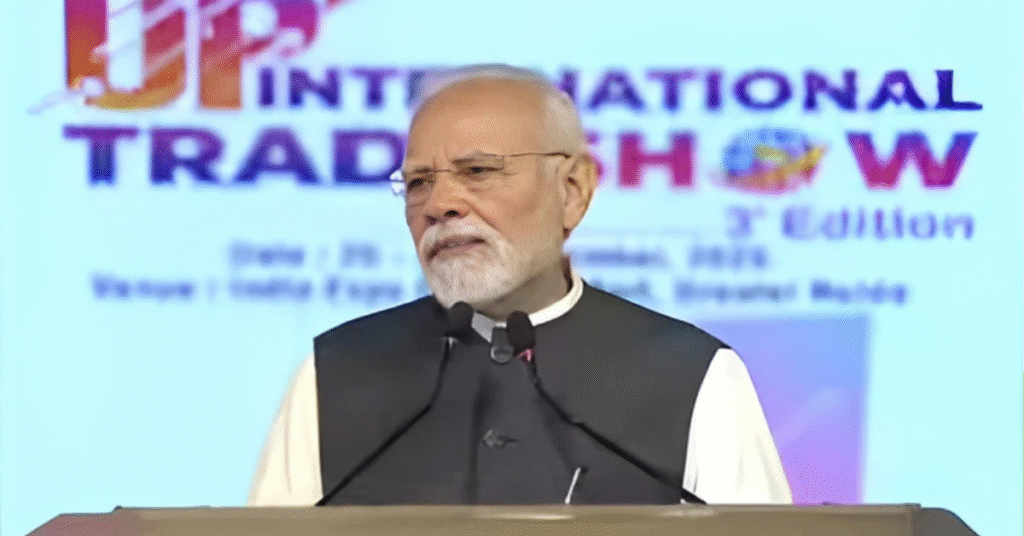On the 11th anniversary of the Make in India initiative, Prime Minister Narendra Modi doubled down on the government’s ambition to turn India into a manufacturing powerhouse. Speaking at the Uttar Pradesh International Trade Show 2025, he declared that India must be able to “manufacture everything from chips to ships,” reinforcing the tenets of Atmanirbhar Bharat — or economic self-reliance.
A Broader Vision: Making India Self-Reliant
Modi’s address came amid global economic turbulence, rising trade protectionism, and supply chain disruptions. He warned that continued dependence on external sources undermines growth and strategic autonomy.
He emphasized that every product that can be made in India should be made in India, underlining the need for robust investment in research, design, and innovation. He also highlighted that 55% of mobile phones produced in India are made in Uttar Pradesh, portraying the state as a pivotal node in the semiconductor and electronics manufacturing ecosystem.
Notably, Modi pointed out that India spends nearly ₹6 lakh crore annually to ship goods overseas an outflow comparable to the nation’s defense budget underscoring the urgent need to localize maritime, shipbuilding, and related logistics capabilities.
Government Moves: Shipbuilding Gets a Big Boost
In a move aligned with this rhetoric, the Union Cabinet approved a ₹69,725 crore package for the shipbuilding and maritime sector. This investment aims to bolster domestic shipyards, enhance infrastructure, and generate employment while reducing import reliance in maritime trade.
Challenges & Stakes
- Semiconductors remain critical: Although India has made strides with the Semicon India Programme and SPECS scheme, the ecosystem still trails global leaders in scale and maturity.
- Capital & infrastructure gaps: Manufacturing at scale — whether chips, ships, or electronics — requires vast investment in factories, utilities, ports, and skilled labor.
- Global competition & trade dynamics: India must navigate export incentives, trade agreements, and tariff regimes to compete with East Asian and Western manufacturing hubs.
- Quality, standardization, and supply chain resilience are essential to gain buyer trust both domestically and internationally.
Final Take
As Make in India enters its second decade, the emphasis is shifting from slogan to execution. With big-ticket support for shipbuilding, renewed focus on electronics, and a clarion call for self-reliance, the government is trying to lay a foundation for sustainable industrial growth. Whether India can transform this vision into global competitiveness will depend on how quickly it can bridge its gaps in investment, capability, and the strategic resolve to produce everything “from chips to ships.”
Keep building. Keep learning. Keep growing with StartupByDoc.


